Enron's bankruptcy - one of the largest financial scams in history. Vol. AND
We invite you to read a two-part series of articles in which we want to bring you closer Enron's bankruptcy, retrospecting the events and examining the details as allowed. Most often, financial scams are associated with suspicious companies that often operate on the border of the law. As a rule, "professionals" from the world of finance are not fooled by them. Sometimes they become victims of financial scammers "the greats of the world of finance". We are talking about investment funds, banks or pension funds. One such example is the history of the company Enron.
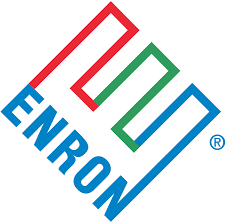
Enron logo. Source: wikipedia.org
It is interesting because the company's activity was not related to new technologies. Most of the activity was related to the old economy sector, which should be well understood by investment analysts, investment portfolio managers, bank analysts and financial journalists. The history of this company is fascinating because the scale of operation was really large. In 2000, Enron's revenue was $101 billion. Such a company should be screened from every side, but it did not happen. Enron's bankruptcy was at that time the largest event of its kind in the history of the US economy. The company remained the leader in this infamous ranking for only a year. In 2002, WorldCom collapsed, which took over the palm of precedence for many years. Losses resulting from the collapse of Enron are estimated at around $65 billion. In today's article, we will tell you what the Enron bankruptcy was and how it went. Due to the length of the material, we decided to divide the article into two parts. In the current one, we will look at the history of the company, its activities and special purpose entities. We invite you to read!
READ: Arch fraudster, aka Bernard "Bernie" Madoff - modern Ponzi
Enron - Company history
Enron was established in 1985 as a result of the merger of Houston Natural Gas with InterNorth. At the beginning, it is worth bringing closer what exactly the companies that make up Enron were dealing with.
InterNorth
InterNorth was founded in 1931 in Omaha, Nebraska (hometown Warren Buffett). The company operated in the natural gas industry. Initially, it focused on midstream activities, i.e. gas transmission via a network of gas pipelines. The company's dynamic development was helped by the Great Depression, as it acquired competitive companies at very low prices. Over the following years, the company was a consolidator in the energy industry. In 1979, InterNorth boasted the largest gas pipeline network in the United States. It was 36 miles. In addition, the company was successful in the plastics manufacturing industry. In 000, the company merged with Nelco Petroleum Company, which allowed it to enter the mining market oil.
Houston Natural Gas
The company was founded in 1925 under the name Houston Oil Co. Initially, the company operated on the market in Houston, Texas. She delivered natural gas to customers via its own gas pipeline network. For the company, the golden period was the years 1967 - 1981. Then, under the leadership of Robert Herring, the company took advantage of the favorable macroeconomic environment to become one of the most important companies in the American energy industry. By the late 1978s, the good times were coming to an end. Increasing natural gas prices made customers look for alternative energy sources. Additionally, in XNUMX, the Gas Policy Act went into effect in Texas. This caused the natural gas business to decline. Herring's death created an institutional problem from which MD Matthews and Kenneth Lay, in turn, tried to overcome. At the end of 1984, this large conglomerate was in a difficult position. This was evident in the share price. The market valued the company well below its intrinsic value.
InterNorth and HNG connection
In 1985 there was a great merger of InterNorth and HNG. The merger took place in May 1985, when InterNorth announced a tender offer for HNG at a price 40% above the market price. At the moment, InterNorth valued HNG at $2,3 billion. As a result, a company with the second largest gas pipeline network in the United States appeared. The two companies were complementary as InterNorth had a north-south (Minnesota-Iowa) oriented pipeline network, while HNG had an east-west (Florida-California) oriented gas pipeline network.
Post-merger period
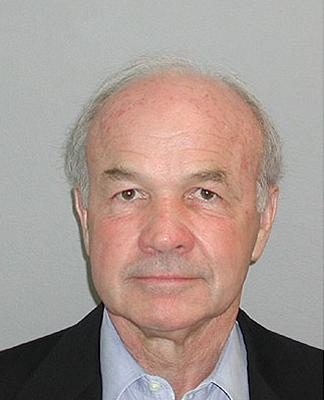
Kenneth Lay. Source: wikipedia.org.
Initially, InterNorth played the “first fiddle” in the combined company. No wonder - they finally took over HNG. InterNorth's CEO was fired very quickly by the Board of Directors. Kenneth Lay from former HNG took over as CEO. Lay moved his headquarters back to Texas very quickly. After moving to Houston, there was also a change in the name of the company. The new CEO approved expenses related to the name change, which exceeded $100. Initially, the company was to be called Enteron, but in the end it was decided to shorten the name to Enron. The new logo was created by the legendary graphic designer - Paul Rand.
Then began the period of reorganization of the company's activities. The new CEO began his reign with a thorough cleanup in the corporate structure and began a "troop review". He very quickly selected assets with which he did not associate much of the future. He decided to sell this part of the company's assets to reinvest the acquired funds in more profitable (in his opinion) branches of business. The organizational structure has also been put in order. All activities related to the operation of the gas pipeline business were incorporated into Enron a Pipeline Operating Company. This made it possible to remove duplicate positions, which improved the company's cost structure. In addition, the company began to invest in activities related to the production of electricity and extraction of natural gas. In the years 1988 and 1989, the activity was also expanded to include cogeneration.
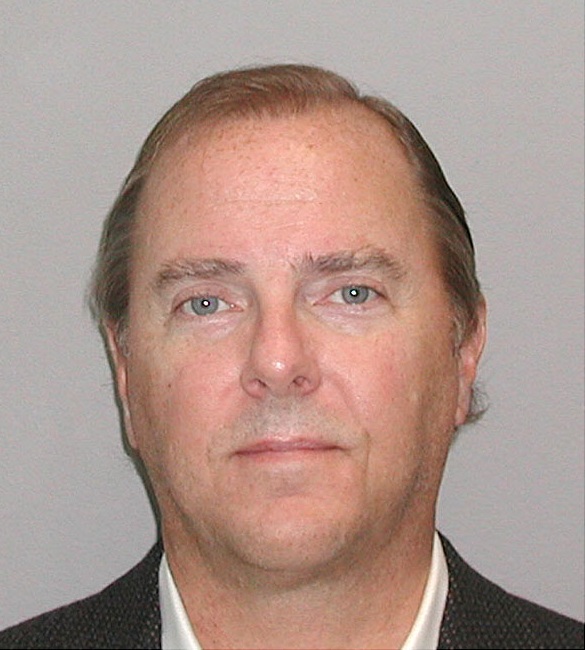
Jeffrey Skilling. Source: wikipedia.org
1989 was also a breakthrough year in that Jeffrey Skilling, who was a consultant at McKinsey & Company, came up with the idea of reaching the customer through more ways. The concept assumed that gas producers and wholesale buyers could simultaneously purchase and secure the price. Finally, the activity was named Gas Bank, which was established in 1991. Enron hired Jefferey Skilling as head of Gas Bank. In addition, Enron began operating in foreign markets. In 1989, the company took out a $56 million loan to develop a power station in Argentina. The loan was financed by OPIC (Overseas Private Investment Corporation).
In addition, Enron began offering loans to oil and gas producers. It is worth noting that in 1990 Enron became a typical market-maker on the natural gas market. As a result, he started trading on the futures and options market on the New York Mercantile Exchange and on the unregulated market (i.e. OTC) where Enron traded swaps i options. In 1991, Andy Fastow began using the so-called off balance sheet partnerships. Initially, they were used for ordinary accounting practices, over time they evolved into a "waste box". As a result, such practices were used to color the net profit.
1991 - 2000
This period brought a transformation of the business model. First of all: Enron began to develop its activities on foreign markets very intensively. This made it possible to diversify the revenue stream, but required a transparent organizational structure and an efficient controlling department. The other major change was transformation from an ordinary energy producer to a company that became someone between an investment company, a hedge fund and an intermediary on the raw materials market. An increasing role was played by Gas Bank, which was renamed Enron Finance Corp, which was managed by Skilling.
Enron also began expanding into the retail customer market. The reason for entering this market was implementation Energy Policy Act from 1992. Under this provision, the Congress allowed states to deregulate the energy market. One of the states that started deregulation was California. This prompted Enron to scale up operations in the state, anticipating price increases. The company has also started expanding into other markets. One of such transactions was the acquisition of PGE (Portland General Electric), which allowed to increase exposure on the California and Oregon markets.
Furthermore, the company established Enron Energy, which offered large discounts to customers in California. In addition, the subsidiary sold natural gas to customers in Ohio and electricity (from wind turbines) in Iowa. Operations ended in 1999, when it was revealed that this small business was losing $100 million a year.
Enron's bankruptcy - a fiber optic dream
The XNUMXs were a time of great expectations as to the changes that the Internet was to make. Technological and e-commerce companies (e.g. eBay or Amazon). Enron believed that it was able to be active in this market by providing critical infrastructure - optical fibers. In 1997, Enron's subsidiary FirstPoint Communications Inc. – established FTV Communications LLC for this purpose. FTV has built approximately 1380 million fiber optics between Portland and Las Vegas. Enron intended to trade network capacity in a similar way to how it operated in the energy commodities market. He was to buy bandwidth at wholesale prices and then sell it to other companies when the price increases.
In January 2000 Kenneth Lay and Jeffrey Skilling announced to stock market analysts that they intend to start trading with their own high-speed fiber optic network. This in turn sparked enthusiasm on Wall Street. As a result, the share price increased from $40 (January 2000) to $90 (Summer 2000). Thanks to the increase in prices, managers and the management board received bonuses worth USD 924 million. The shares received by the managers were regularly traded on the stock exchange. The president of Enron Nroadban Services alone - Kenneth Roce - sold one million shares for about $70 million.
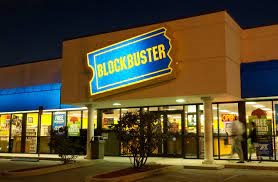
Source: marketplace.org
There is a significant oversupply in the fiber optic market. Only 5% of the 40 million lines were active. Enron believed that the demand for Internet services would increase significantly in the following years. For this reason, the company started buying so-called "dark fibers" that were not used. The prices were attractive, but you had to wait many months or even years to see the first customers using the fiber network. Enron in its accounting estimated how much watt such a line would be when it was active. Such "estimation" allowed for the accounting increase of revenues and profits.
On March 12, 2001, information appeared about the cancellation of a 20-year deal between Blockbuster and Enron for the use of fiber optic lines for video streaming. As a result, the share price fell from $80 to $60. The highly anticipated growth of this segment generated $400 million in revenue in 2001. From dreams of billions of profits, only newspaper headlines remained. The segment related to broadband Internet services was phased out in the second half of 2001.
Enron's bankruptcy resulted in the assets of the communications segment being sold for a fraction of their value. In 2002, Rob Roy of Switch Communications purchased Enron's Nevada facilities for just $930. Switch was the only one willing to get this active. It was built very quickly here "the largest data center in the world".
Enron and his dreams of power
After the merger of the company in 1985, the company began to think about expanding beyond the borders of the United States. The first transaction of this type was the purchase of a natural gas power plant near Middlesbrough in the United Kingdom. It was a big investment as this one plant supplied electricity to 3% of households in the country. The transaction was successful, which encouraged the management board to look for further investments. Rebecca Mark, a former high-level employee at HNG, became the head of Enron International (EI). The company began buying assets both in developed markets (Australia, France, Germany, Japan, United Kingdom) as well as in developing countries (including Turkey, Brazil, Poland, China, Colombia, Indonesia). In 1996, foreign operations accounted for 25% of the company's profits.
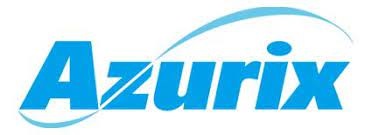
Source: wikipedia.org
Enron believed that another wave of deregulation would roll over the world's energy market and it would be related to the water supply network. In 1998, the company acquired Wessex Water for $2,88 billion. The acquired company became a pearl in the crown of Enron's newly established daughter company - Azurix. The company debuted on the stock exchange in 1999, which allowed Enron to raise $ 1 billion. Moreover, in order to improve liquidity, Azurix was burdened with new debts. At the end of 2000, the interest debt amounted to over $2 billion. Moreover, the market environment began to deteriorate. The UK regulator has demanded a 12% cut in prices for water services. At the same time, it began to require more investment in aging infrastructure. The estimated cost of repairs was estimated at one billion dollars. In 2000, the company reported 100 million operating profit. Small profits combined with high debt put Azurix in a difficult financial position. This resulted in the resignation of Rebecca Mark. Enron, in turn, was looking for a buyer of assets related to water networks. Eventually, Enron sold Azurix North America and Azurix Industrial Operations to American Water Works for $141,5 million.
Special Purpose Entities (SPEs)
They were special purpose companies. Created to execute specific transactions or manage the risk of specific assets. Such enterprises were created by the parent company but financed by investors and debt. Enron used a very large number of special purpose companies just to hide debt in off-balance sheet liabilities or sell them toxic assets. This practice caused Enron to overstate its equity and profits and understate liabilities. It should be mentioned that many SPEs used Enron stock as collateral for loans. For this reason, such a house of cards could exist as long as Enron's stock price was rising. So the board did everything it could not to disappoint Wall Street analysts.
Chewco
The trades were really interesting. They forced accountants to go to the "heights" of their creativity to hide the debt off Enron's books. An interesting example is Chewco Investments LP. The reason for establishing the company is very interesting. In 1993, Enron entered into a Joint Venture with CalPERS (a California state pension fund). The joint venture was called JEDI (Joint Energy Development Investments). After four years, Enron offered CalPERS a partnership in another venture. The fund agreed on the condition that the solution would be a partnership in JEDI. Enron, however, was not interested in consolidating JEDI's debts. For this purpose, he appointed Chewco, which was to buy CalPERS shares for $ 383 million.
Chewco itself was not consolidated by Enron because it was structured so as not to meet the conditions for SPE consolidation. The established company was financed with an unsecured loan from Barclays Bank. It is worth noting that despite the lack of collateral, there was an Enron guarantee, which was secured by the company's own shares. Enron used Chewco to report about $400 million in profit and cover up $600 million in debt.

Source: wikipedia.org
In November 2001, employees Arthur Anderson discovered a letter that contained a detailed description of a seemingly insignificant transaction. Enron established a cash collateral to provide Chewco with external capital to meet the required SPE status. Based on this document, an Andersen employee told Bill McLucas, who led the internal investigation, that Chewco could not be treated as an SPE. As a result, Enron should consolidate both Chewco and JEDI. This would mean that Eron's financial results and balance sheet would have to be adjusted from 1997 onwards.
Whitewing and LJM
Whitewing is also an interesting example. The company was founded in 1997 as a result of investments by Enron ($579 million) and external investors ($500 million). Two years later, the ownership structure was changed to stop consolidating it. When Whitewing was "off the books" it was used to buy Enron assets. Between 1999 and 2001, Whitewing acquired Enron's assets worth $2 billion. The acquisitions were financed by debt backed by Enron shares. Such actions caused Enron to report "artificial" sales, which improved the company's results.
Another interesting example is LJM. In 1999, Fastow created two more companies, LJM Cayman LP (LJM1) and LJM2 Co-Investment LP (LJM2), to buy Enron's undervalued shares. Interestingly, the name LJM is an abbreviation of Lea, Jeffrey Matthew, the names of Andrew Fastow's wife and children. These companies were financed with bank debt from such banks as Wachovia, JP Morgan, Credit Suisse First Boston and Citigroup. In addition, Merrill Lynch acquired shares in companies worth $ 22 million. LJM1 was used to improve valuations of Enron's stock portfolio.
Rhythms case
In March 1998, Enron invested $10 million in 5,4 million shares of Rhythms NetConnections. Rhythms was engaged in the provision of broadband services. When the company debuted on the stock exchange, the value of the shares skyrocketed. This allowed Enron to book a profit on the deal. Currently, the stock portfolio was valued at $300 million. Enron could not sell overvalued shares because it had a lock-up, i.e. an obligation not to sell shares for the next 6 months. Initially, Enron transferred 3,4 million Enron shares worth $276 million to LJM1 at a price of $168 million. LJM1 then bailed out its subsidiary (Swap-Sub) with $80 million (in stock) and $3,75 million in cash. In the next move, Swap-Sub issued a put option on 5,4 million shares of Rhythms owned by Enron. The option expired in June 2004 and obliged the Swap-Sub to buy the shares at a price of $56 each. The payment was to be financed by Swap-Sub's Enron shares. In a situation where the price of Rhythms shares falls and Enron's does not, Enron will "sell" Rhythms shares at $56 in exchange for its own shares, which it contributed to LJM1. The problem will arise when both Rhythms and Enron stocks fall. Then the subsidiary will not be able to "buy back" the shares at the agreed price. In April 2000, Enron expected the deal to end up generating a large loss. For this reason, he terminated the contract with Swap-Sub. The subsidiary bought back shares worth $234 million paying with Enron shares. According to the agreements, Enron's shares should be discounted to $161 million. However, that did not happen. Enron reported a small profit from the entire venture despite incurring an actual loss of about $70 million.
Brazilian interest
Another example of using LJM was the purchase of shares in the Brazilian company EPE. It was an investment in a natural gas-fired power plant in Cuiaba in Brazil. The investment had a number of problems, so the shares should be valued lower, which would affect the company's results. For this reason, part of the shares was sold to LJM1 and Enron did not have to consolidate the problematic investment in Brazil. As a result, Enron improved its results in the second half of 1999 by about $65 million. Enron then repurchased LJM1 at a loss of $3 million, even though EPE's situation was even worse than before the transaction with its subsidiary.
Enron's bankruptcy - End of Part I
In this section, we took a look at how the company's operations looked like. From an "ordinary" company that was active in the energy market, it became a fund and investor in many markets. Not all trades resulted in profits. The company therefore created special purpose vehicles that "absorbed" Enron's failed investments. This allowed to improve financial results, which increased the valuation of shares. Thanks to this, managers could pay themselves bonuses, and collateral belonging to the SPE (Enron shares) postponed the need to repay the loans. In the second part, you will learn about the corporate culture, ways of recognizing revenues and how the bankruptcy of Enron went.
Enron's bankruptcy - What led to the collapse of the company? Vol. II






















![Forex Club – Tax 9 – Settle tax on a foreign broker [Download the Application] Forex Club - Tax 9](https://forexclub.pl/wp-content/uploads/2024/02/Forex-Club-Podatek-9-184x120.jpg?v=1709046278)
![Trading View platform – solutions tailored to the needs of traders [Review] trading view review](https://forexclub.pl/wp-content/uploads/2024/03/trading-view-recenzja-184x120.jpg?v=1709558918)
![How to connect your FP Markets account to the Trading View platform [Guide] fp markets trading view](https://forexclub.pl/wp-content/uploads/2024/02/fp-markets-trading-view-184x120.jpg?v=1708677291)
![How to invest in ChatGPT and AI? Stocks and ETFs [Guide] how to invest in chatgpt and artificial intelligence](https://forexclub.pl/wp-content/uploads/2023/02/jak-inwestowac-w-chatgpt-i-sztuczna-inteligencje-184x120.jpg?v=1676364263)


![WeWork – the anatomy of the collapse of a company valued at $47 billion [WeWork, part II] wework bankruptcy story](https://forexclub.pl/wp-content/uploads/2024/04/wework-bankructwo-historia-184x120.jpg?v=1711729561)
![Adam Neumann – the man who screwed up Softbank [WeWork, part AND] adam neumann wework](https://forexclub.pl/wp-content/uploads/2024/04/adam-neumann-wework-184x120.jpg?v=1711728724)





![How to transfer shares to another brokerage office [Procedure description] how to transfer shares to another brokerage house](https://forexclub.pl/wp-content/uploads/2024/03/jak-przeniesc-akcje-do-innego-biura-maklerskiego-184x120.jpg?v=1709556924)

![The most common mistakes of a beginner trader - Mr Yogi [VIDEO] Scalping - The most common mistakes of a beginner trader - VIDEO](https://forexclub.pl/wp-content/uploads/2024/03/Scalping-Najczestsze-bledy-poczatkujacego-tradera-VIDEO-184x120.jpg?v=1711601376)
![Learning patience: No position is also a position - Mr Yogi [VIDEO] Scalping - Learning patience - No position is also a position - VIDEO](https://forexclub.pl/wp-content/uploads/2024/03/Scalping-Nauka-cierpliwosci-Brak-pozycji-to-tez-pozycja-VIDEO-184x120.jpg?v=1710999249)
![When to exit a position and how to minimize losses - Mr Yogi [VIDEO] Scalping - When to exit a position and how to minimize losses - VIDEO](https://forexclub.pl/wp-content/uploads/2024/03/Scalping-Kiedy-wyjsc-z-pozycji-i-jak-minimalizowac-straty-VIDEO-184x120.jpg?v=1710336731)



![WeWork – the anatomy of the collapse of a company valued at $47 billion [WeWork, part II] wework bankruptcy story](https://forexclub.pl/wp-content/uploads/2024/04/wework-bankructwo-historia-300x200.jpg?v=1711729561)
![Adam Neumann – the man who screwed up Softbank [WeWork, part AND] adam neumann wework](https://forexclub.pl/wp-content/uploads/2024/04/adam-neumann-wework-300x200.jpg?v=1711728724)












